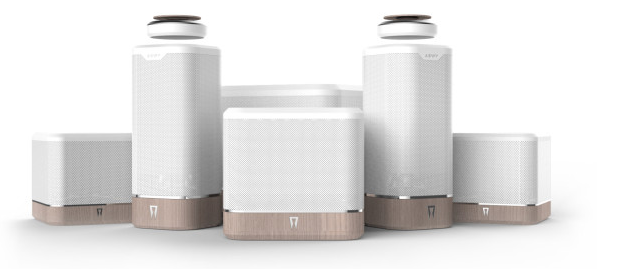One problem with small wireless speakers is the quality of their sound. In other words, let’s face it: They tend to not even be all that great at the main function they were designed for.
 Spaco is a line of 720-degree, voice-controlled speakers with adjustable lighting that also tout high-end audio performance. The speakers can be controlled by voice even in noisy situations and also offer a special levitation feature providing what its makers call uninterrupted surround sound. A 720-degree acoustics field is created by the combination of 28 dynamic and electrostatic diaphragm drivers that provide what they say is multidimensional, movie-theater grade audio. Music can be streamed from any device that has Bluetooth or Wi-Fi, and Spaco supports Wi-Fi networks with any 802.11b/g, 2.4GHz broadcast-capable router. Set-up is done via an Android and iOS app.
Spaco is a line of 720-degree, voice-controlled speakers with adjustable lighting that also tout high-end audio performance. The speakers can be controlled by voice even in noisy situations and also offer a special levitation feature providing what its makers call uninterrupted surround sound. A 720-degree acoustics field is created by the combination of 28 dynamic and electrostatic diaphragm drivers that provide what they say is multidimensional, movie-theater grade audio. Music can be streamed from any device that has Bluetooth or Wi-Fi, and Spaco supports Wi-Fi networks with any 802.11b/g, 2.4GHz broadcast-capable router. Set-up is done via an Android and iOS app.




 TurnUp
TurnUp Many people select music that’s based on their mood at any given time.
Many people select music that’s based on their mood at any given time.